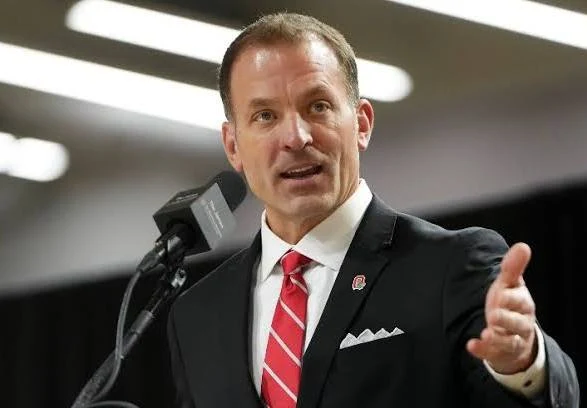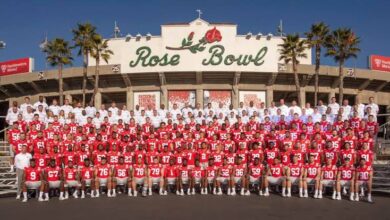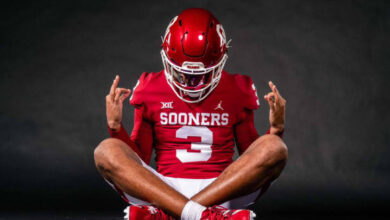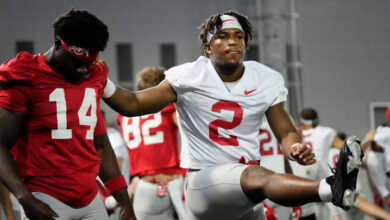Official: College Football Set for Major Shift as Ross Bjork Details Expansion Vision…
Official: College Football Set for Major Shift as Ross Bjork Details Expansion Vision...

Official: College Football Set for Major Shift as Ross Bjork Details Expansion Vision
In a move that could significantly reshape the landscape of collegiate athletics, Ross Bjork, Vice President for Intercollegiate Athletics at The Ohio State University and one of the sport’s most influential voices, has announced a sweeping vision to expand and modernize college football. Speaking at a press conference on campus Friday afternoon, Bjork outlined a strategic initiative aimed at driving competitive balance, increasing access, and enhancing the fan experience across all levels of the game.
“This is more than just growth—this is about transformation,” Bjork said. “College football is not only the most followed amateur sport in the country, it’s also evolving rapidly. If we want to lead and not follow, we have to think big.”
A Three-Pillar Expansion Strategy
Bjork’s proposal is built on three core pillars: Playoff Expansion, Conference Realignment, and Investment in Emerging Programs.
1. Playoff Expansion to 16 Teams
At the center of the plan is an expansion of the College Football Playoff (CFP) from 12 to 16 teams, a move Bjork says is necessary to reflect the growing parity in the sport.
“The gap between top programs and rising programs has closed,” he noted. “A 16-team format gives us the opportunity to reward excellence across more conferences, and to showcase more talent on the national stage.”
Under the proposed model, automatic bids would be awarded to the champions of the Power Five conferences, as well as the top Group of Five team. The remaining slots would be filled by at-large bids determined by the CFP selection committee, with the first round played at higher-seeded home stadiums—a change that would bring playoff excitement directly to campus communities.
2. Strategic Conference Realignment
Bjork also acknowledged ongoing conversations around conference realignment, stating that geographic logic, institutional fit, and fan engagement must be prioritized over television markets alone.
“Fans are asking for traditions to be preserved, for rivalries to continue, and for student-athletes to have manageable travel schedules,” he said. “Our realignment strategy must reflect those values.”
While he stopped short of naming specific schools, sources indicate discussions are underway to stabilize mid-tier conferences and improve competitive equity. Bjork hinted at a possible east-west pod system within conferences to ease logistical burdens while preserving regional identity.
3. Investment in Emerging Programs
Perhaps most notably, Bjork emphasized a commitment to investing in historically underrepresented programs, particularly those at Historically Black Colleges and Universities (HBCUs) and in underserved regions.
“College football’s soul is in its diversity—from the Southern traditions to the urban grit of programs in the North and Midwest,” Bjork said. “We will work to support emerging programs with infrastructure grants, coaching development pipelines, and media visibility.”
This initiative includes proposed partnerships with the NCAA, private sponsors, and network broadcasters to elevate smaller programs to national prominence.
A Vision Backed by Action
Bjork made it clear this was not a theoretical plan but one already in motion. He shared that he has been in ongoing talks with NCAA leadership, conference commissioners, athletic directors, and major broadcast networks to build consensus around the expansion blueprint. A working group of university presidents and ADs is set to begin formal meetings later this summer, with a goal of presenting finalized recommendations by early 2026.
The reception to Bjork’s announcement has been swift and largely positive. Ohio State head football coach Ryan Day praised the initiative, saying, “Ross understands where this sport is headed. This kind of leadership is what college football needs.”
Industry experts have also chimed in. Sports media analyst Paul Finebaum called the announcement “one of the most consequential moments in the modern era of the sport,” while CBS Sports’ Dennis Dodd wrote, “If Bjork’s plan gains traction, it could do for college football what the NFL merger did for professional football.”
Balancing Tradition and Innovation
Still, some questions remain—particularly around logistics, athlete welfare, and the growing financial demands on athletic departments. Bjork addressed these head-on, saying, “We’re not trying to erase tradition. We’re trying to protect and evolve it. That means being honest about where we are and bold about where we’re going.”
He reiterated that any changes would involve extensive input from student-athletes and academic leaders, emphasizing a holistic approach that balances competition, education, and mental health.
Looking Ahead
With college football facing unprecedented change—from NIL rights to transfer portal fluidity—Ross Bjork’s expansion vision could be a defining chapter in the sport’s future. While challenges remain, the clarity and ambition of his proposal have already reignited conversations across campuses, locker rooms, and boardrooms nationwide.“This is about writing the next great story in college football,” Bjork concluded. “And everyone deserves a voice in that story.”















